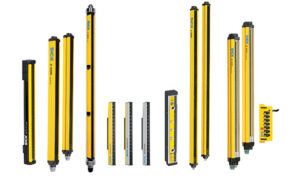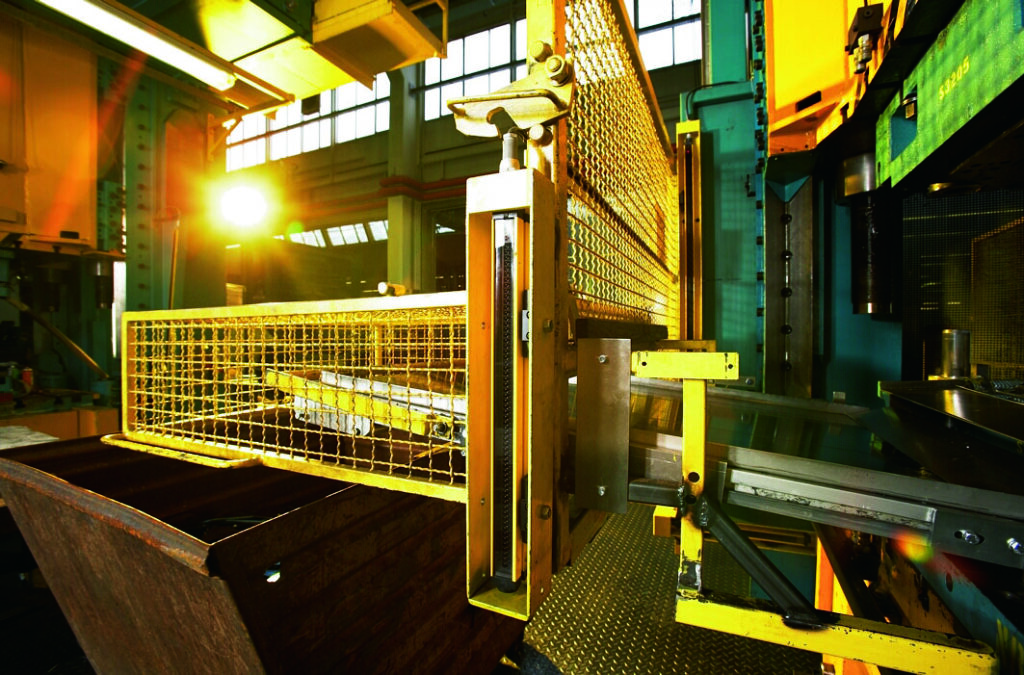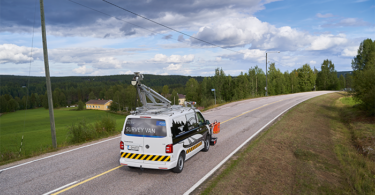Safeguarding Machinery with Light Curtains and How to Calculate Safety Distance with ANSI
 When safeguarding your machinery, it is not enough to simply install a light curtain(s) and assume that the machine is now safe. Calculating safety distance, as defined by the American National Standards Institute (ANSI), is a crucial step for any installation of safeguards, including light curtains. This post explains how to calculate safety distance for light curtains.
When safeguarding your machinery, it is not enough to simply install a light curtain(s) and assume that the machine is now safe. Calculating safety distance, as defined by the American National Standards Institute (ANSI), is a crucial step for any installation of safeguards, including light curtains. This post explains how to calculate safety distance for light curtains.
According to ANSI B11.19-2019, safety distance is, “the minimum distance an engineered control (guard or device) is installed from a hazard such that individuals are not exposed to the hazard.” It is best practice to calculate the theoretical value for the safety distance before installing a light curtain.
Then, once installed, use a stop time measurement (STM) device to calculate how quickly the machine stops, and use this value to determine the minimum safety distance required. Taking the time to calculate safety distances upfront not only ensures compliance with global safety regulations, but also helps prevent long term costs of injury and machine downtime.
Safety Distance Application Example: Mechanical Power Presses
For example, a mechanical power press cannot immediately come to a complete stop. Rather, it takes time for the machine to respond to the safeguarding device and all interfaced components before achieving a complete stop. If the light curtain is placed too close to the crushing point, the machine may not have sufficient time to respond to a person’s finger or hand approaching the hazard.
Additionally, some machines may have a coast down time due to a rapid process that cannot be stopped quickly without damaging the machine or products. In these cases, guard locking interlocks may be a better solution as they keep the movable guards locked, preventing access by personnel until the hazardous motion has ceased. Consult a safety professional to determine the appropriate safety solution for your machine.
How to Calculate Safety Distance
The ANSI calculation takes into consideration a number of factors, including a constant value representing the approach speed of an individual, the reaction time of your machine, the reaction time of the light curtain, and the reaction time of the safety-related parts of the control system. It is also important to work in extra time as a buffer for any variations in the machine reaction time.
To determine the stopping time of the machine (Ts), you would typically take 10 stop time measurements, calculate the mean, then add 3 standard deviations. This calculated value, or the highest of the 10 measured values, should then be used as the value of Ts in the formula below.
Another important element of the calculation is the reaching distance associated with devices (dds). This refers to how far over (ddo), under (ddu), or through (ddt) the protective field an individual can travel before being detected by the light curtain. Tables I.3 and I.4 from ANSI B11.19-2019 can be used to determine the ddo and ddu factors respectively, based on the heights of the hazard zone, top of sensing field and bottom of sensing field. The ddt calculation is dependent on the mounting orientation and effective detection capability (resolution) of the light curtain. In vertical applications, the calculation is as follows (where de is the effective detection capability/resolution of the light curtain):
ddt = 3.4 x (de – 7) mm
Therefore, a light curtain with 14 mm resolution (finger detection) has a ddt of 23.8 mm (about an inch). Meanwhile, a light curtain with 30 mm resolution (hand detection) has a ddt of 78.2 mm (about 3 inches).
After evaluating each of these factors, the reaching distance can be determined as below;
dds ≥ maximum ( ddo , ddu , ddt )
ANSI Minimum Safety Distance (D) Calculation
A safety professional can help you determine the stopping time (Ts) of your machine. Then use the following formula to calculate the minimum safety distance for your application.
D = K x (Td + Ti + Tc + Ts + Tscm) + dds
Key of Terms:
- K = Approach speed of an individual toward the hazard zone (63 inches/second)
- Td = Reaction time of the device (provided by the manufacturer)
- Ti = Reaction time of the interface (provided by the manufacturer)
- Tc = Reaction time of the actuator control system (measured with a stop time measurement device)
- Ts = Reaction time of the machine (measured with a stop time measurement device)
- Tscm = Time associated with safe condition (stopping performance) monitoring systems (defined parameter of the monitoring system)
- dds = Reaching distance associated with devices
![]() Want to learn more about calculating safety distance, light curtains, and the ANSI B11.19 Standard? Check out our six-part white paper series for more details! In addition, you can contact a SICK representative today to speak to a safety professional.
Want to learn more about calculating safety distance, light curtains, and the ANSI B11.19 Standard? Check out our six-part white paper series for more details! In addition, you can contact a SICK representative today to speak to a safety professional.
This blog post is meant as a guideline only, and is accurate as of the time of publication. When implementing any safety measures, we recommend consulting with a safety professional.






